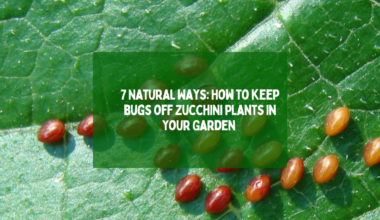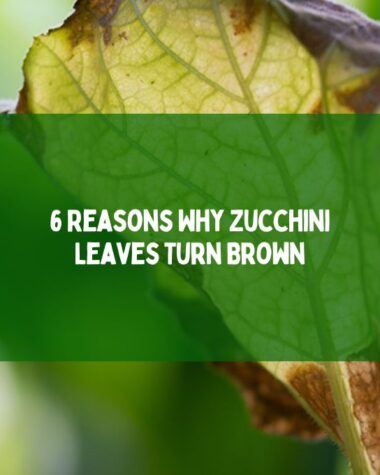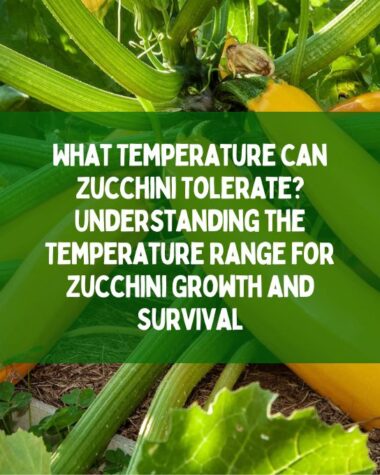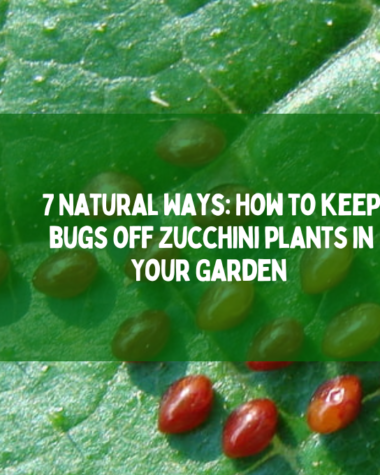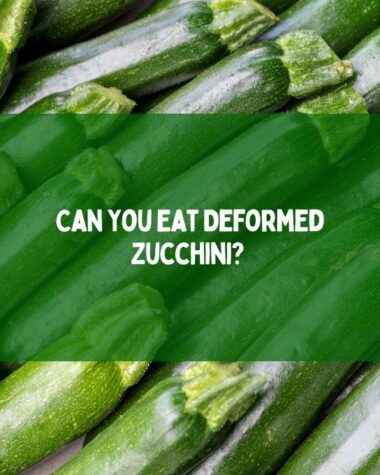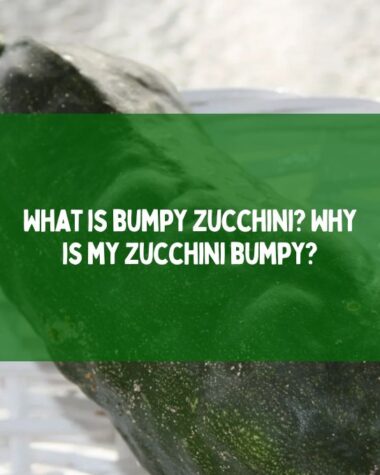Zucchini plants can wilt for various reasons, including over- or under-watering, powdery mildew disease, bacterial wilt, insect infestations, and a lack of nutrients and water. The bacterial wilt in zucchini causes the entire plant to wilt.
Insect pests can also cause wilting by consuming the plant’s sap and sucking the chlorophyll out of the leaves. Additionally, squash vine borer invasion and sunburn can also cause zucchini plants to wilt.
This article helps you protect your zucchini plants.
Let’s start.
8 Reasons Why My Zucchini Plant Is Wilting

To determine the cause of your zucchini plant’s wilting, it’s important to check the soil moisture level, inspect the roots, and look for any signs of pests, disease, or nutrient deficiency.
Here are some reasons:
1. Underwatering a Zucchini Plant
Underwatering can cause zucchini plants to wilt. If the soil is too dry, the plant will not be able to take in enough water to support its growth, leading to wilting of the leaves.
Prevention
To prevent underwatering, it is recommended to water the soil to a depth of two to three feet once per week and increase the frequency to three times per week during the hottest months.
Checking the soil with your hands can help determine the water level. Watering the leaves instead of the soil can trigger fungal and bacterial diseases that cause wilting.
Related Reading
- 7 Natural Ways: How to keep bugs off zucchini plants in Your Garden
- How to Harvest Zucchini: Tips and Techniques to Ensure a Rich Harvest
- 7 Reasons Why is my Zucchini Plant Not Producing Fruit?
- Golden Zucchini Squash: A Nutritious Summer Vegetable
2. Overwatering the Zucchini Plant
When the soil becomes waterlogged, the roots are unable to take in the nutrients required for the plant to thrive, leading to the wilting of the leaves. The four main signs of overwatering zucchini plants are slow growth, yellow leaves, the appearance of mold, and fruit rotting on the vine.
Prevention
To prevent overwatering, it is recommended to water the soil to a depth of two to three feet once per week and increase the frequency to three times per week during the hottest months.
3. Root damage To The Zucchini Plant

Bacterial wilt is a common disease that can cause the entire plant to wilt, with leaves turning dark green and dull and discoloration on the stems. Without healthy roots, zucchini plants cannot obtain the nutrients and water they require for proper growth, leading to wilting of the leaves.
Prevention
To prevent root damage, it is recommended to use well-drained soil and avoid overwatering. If your zucchini plant is wilting due to root damage, it is important to address the underlying issue to preserve the plant’s health and save your crops.
4. Pest infestation
Pests such as aphids, spider mites, and squash bugs can consume the plant’s sap or pierce and suck the chlorophyll out of the leaves, leading to wilting of the foliage. Pest damage can also lead to nutrient deficiencies, which can further cause the plant to wilt.
Prevention
To prevent pest infestation, it is recommended to keep the garden clean and free of debris and to use insecticidal soap or neem oil to control pests. Sanitize gardening tools between uses to prevent the spread of pests.
5. Disease Occurs in the Zucchini Plant
Powdery Mildew fungus disease can cause a white, powdery coating to develop on the leaves of the zucchini plant, which can eventually cause the leaves to wilt and die. High humidity and poor air circulation are common causes of it.
Bacterial wilt disease is caused by a bacterium that infects the plant’s vascular system, blocking the flow of water and nutrients. Infected plants may wilt suddenly with no apparent cause.
The leaves may turn yellow and wilt, and the stems may develop a brown discoloration.
6. Heat stress
Zucchini plants can wilt due to heat stress. In the hottest months, zucchini plants require more frequent watering.
Prevention
To prevent heat stress, plant zucchini in a location with partial shade, maintain proper watering and drainage, and avoid watering the leaves to prevent fungal and bacterial diseases that can cause wilting.
7. Nutrient deficiency

Nitrogen is essential for plant growth and development, and it can cause the leaves of the zucchini plant to turn yellow and wilt. The plant may also show stunted growth and reduced yields. Phosphorus is important for root growth and flower and fruit development.
Potassium is important for plant growth and the regulation of water balance. A potassium deficiency can cause the leaves of the zucchini plant to wilt and turn yellow or brown around the edges. The plant may also show stunted growth and reduced yields.
8. Soil problems
Overwatering can lead to root rot, where the soil and roots become too saturated for too long, leading to fungus entering the soil and attacking the roots, causing the leaves to wilt. Soil with poor drainage can also cause wilting, as it can lead to waterlogged soil and root rot.
Prevention
To prevent soil problems, it is recommended to use well-draining soil and adjust the pH of the soil to around 6.0–7.5, which is what zucchini plants prefer. Doing a soil test before planting can also help identify any potential soil problems.
Related Reading
- How to Prevent Animals from Eating Your Pumpkins?
- What Are Seedless Cucumbers? Characteristics and Growing Techniques
- Tomato Stakes Vs Cages: Which is Better for Support?
- How to Soften Carrots: Seven Quick and Easy Ways
Conclusion
The reasons include underwatering or overwatering, root damage, pest infestations, diseases such as powdery mildew, bacterial wilt, mosaic virus, and verticillium wilt, heat stress, nutrient deficiencies, and soil problems.
Additionally, it is important to address any potential pest or disease issues and provide adequate shade and ventilation to prevent heat stress.
Thanks for reading!
